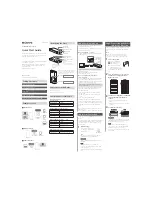
Chapter 14, Controlling Access to Your Server
341
Restricting Access to Your Web Site
To configure access control with users and groups, follow the general
directions for restricting access. When you click the Users/Groups field, a
additional options appear in the bottom frame. The following list describes the
options in the bottom frame.
•
Anyone (No Authentication)
is the default and means anyone can access
the resource without having to enter a username or password. However,
the user might be denied access based on other settings, such as host name
or IP address. For Enterprise Administration Server, this means that anyone
in the administrators group that you specified with distributed
administration can access the pages.
•
All in the authentication database
matches any user who has an entry in
the database. To use this option, you must also check “Authenticated
people only.” For Enterprise Administration Server, the users you specify
must also be in the “administrators” group you specified for distributed
administration.
•
Only the following people
lets you specify certain users and groups to
match. You can list the users and groups of users individually by separating
the entries with commas. Or, you can enter a wildcard pattern. To use this
option, you must also check “Authenticated people only.”
•
Group
matches all users in the groups you specify. For Enterprise
Administration Server, the users in the groups you specify must also be
in the “administrators” group you specified for distributed
administration.
•
User
matches the individual users you specify.
•
Prompt for authentication
lets you specify message text that appears in
the authentication dialog box. You can use this text to describe what the
user needs to enter. Depending on the operating system, the user will see
about the first 40 characters of the prompt. Netscape Navigator and
Netscape Communicator cache the username and password and associate
them with the prompt text. This means that if the user accesses areas (files
and directories) of the server that have the same prompt, the user won’t
have to retype usernames and passwords. Conversely, if you want to force
users to reauthenticate for various areas, you simply need to change the
prompt for the ACL on that resource.
•
Authentication Methods
specifies the method the server uses when
getting authentication information from the client.
Summary of Contents for Netscape Enterprise Server
Page 30: ...Contacting Technical Support 30 Netscape Enterprise Server Administrator s Guide ...
Page 32: ...32 Netscape Enterprise Server Administrator s Guide ...
Page 56: ...Sending Error Information to Netscape 56 Netscape Enterprise Server Administrator s Guide ...
Page 66: ...66 Netscape Enterprise Server Administrator s Guide ...
Page 112: ...Managing a Preferred Language List 112 Netscape Enterprise Server Administrator s Guide ...
Page 158: ...158 Netscape Enterprise Server Administrator s Guide ...
Page 182: ...Using the Watchdog uxwdog Process Unix 182 Netscape Enterprise Server Administrator s Guide ...
Page 196: ...Viewing Events Windows NT 196 Netscape Enterprise Server Administrator s Guide ...
Page 218: ...Enabling the Subagent 218 Netscape Enterprise Server Administrator s Guide ...
Page 266: ...266 Netscape Enterprise Server Administrator s Guide ...
Page 302: ...Enabling WAI Services 302 Netscape Enterprise Server Administrator s Guide ...
Page 310: ...310 Netscape Enterprise Server Administrator s Guide ...
Page 446: ...Customizing the Search Interface 446 Netscape Enterprise Server Administrator s Guide ...
Page 448: ...448 Netscape Enterprise Server Administrator s Guide ...
Page 454: ...Responses 454 Netscape Enterprise Server Administrator s Guide ...
Page 464: ...Referencing ACL Files in obj conf 464 Netscape Enterprise Server Administrator s Guide ...
Page 504: ...504 Netscape Enterprise Server Administrator s Guide ...
















































